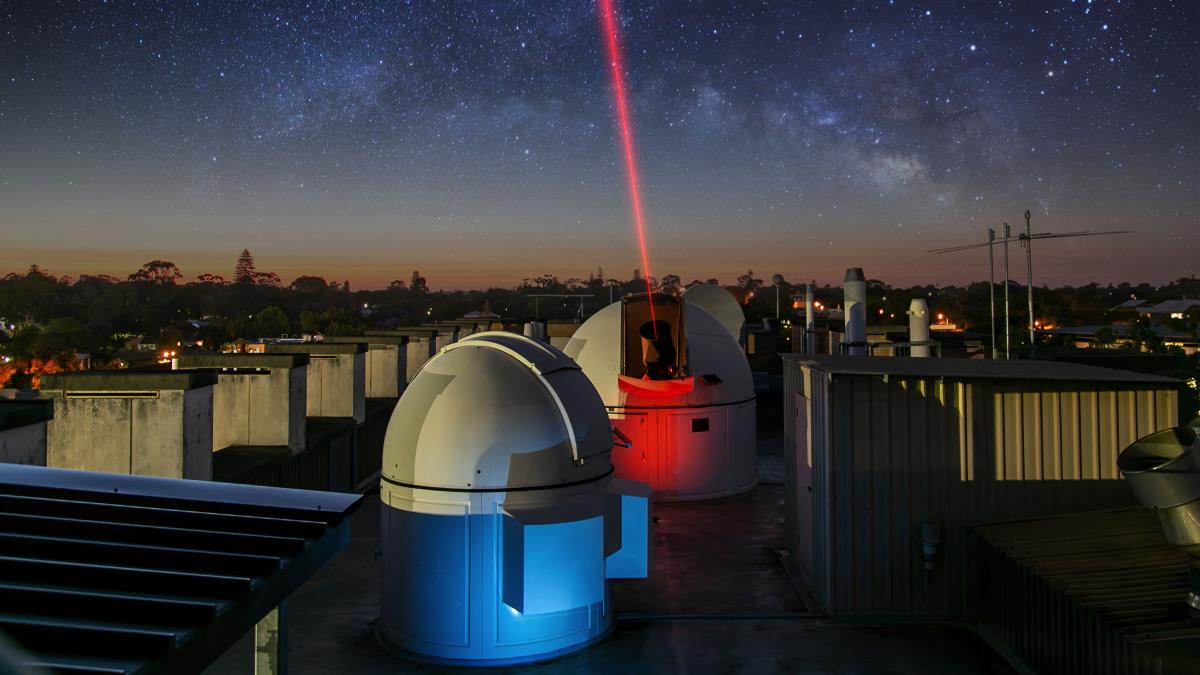In a proof-of-concept breakthrough, researchers from the University of Western Australia (UWA) have successfully received infrared laser signals from a satellite in low Earth orbit.
The feat of engineering paves the way for a 1,000-fold increase in communication speeds between Earth and space.
Ever since Sputnik, satellites have used radio waves to communicate with Earth-bound ground stations. The current number of active satellites nears 10,000 and their ability to generate data has similarly skyrocketed.
Due to the number of satellites, the finite radio spectrum, and issues with interference, there is now a critical bottleneck in getting data back to Earth. Infrared lasers can address this problem because their higher frequency can transfer more data per second.
Led by Associate Professor Sascha Schediwy from UWA and the International Centre for Radio Astronomy Research, the TeraNet team set up a network of ground stations capable of detecting infrared laser signals from space.
On Thursday, they captured their first signals from a laser aboard a German satellite in low Earth orbit.
“This demonstration is the critical first step in establishing a next-generation space communications network across Western Australia,” says Schediwy.
“The next steps include joining this network to other optical ground stations currently being developed in Australia and across the world.”
It’s not easy to aim a focused laser at moving targets separated by about 2,000 kilometres.
“The acquisition of those signals and the robust pointing is more challenging than with radio,” says Schediwy. “The [laser] beam might start off as a few tens of centimetres across the one end, and by the time it gets to the other end it might be only tens or a couple of hundred metres.”
Once a connection is made, infrared lasers have the potential to transfer thousands of gigabits per second.
“The James Webb Space Telescope spends something like 10 hours a day downloading its scientific images to the ground,” says Schediwy. “Using laser type technology, this would go down to several minutes.”
Weather conditions present another technical hurdle as clouds or rain can interrupt the laser signal. To overcome this challenge, the TeraNet team built a network of 3 ground stations spread across Western Australia. This way, the satellite can download its data to the station with the clearest skies.
One of the ground stations that captured the satellite signal is a Jeep with a built-in receiver. It is capable of driving to sites and receiving signals within 15 minutes of arrival. The TeraNet team envision similar, relatively low-cost mobile ground stations connecting remote communities to the internet or providing rapid communications support to areas impacted by natural disasters.
The TeraNet team plans to support multiple international space missions operating between low Earth orbit and the Moon.
Schediwy also hopes TeraNet’s achievement will revolutionise coverage of the first woman and first man of colour on the Moon’s surface.
“I’d like to be able to see that footage streamed in high definition with multiple camera angles and be able to broadcast that inspiring vision back to the ground.
“I think laser communications is the ideal technology to make that a reality.”





















Discussion about this post